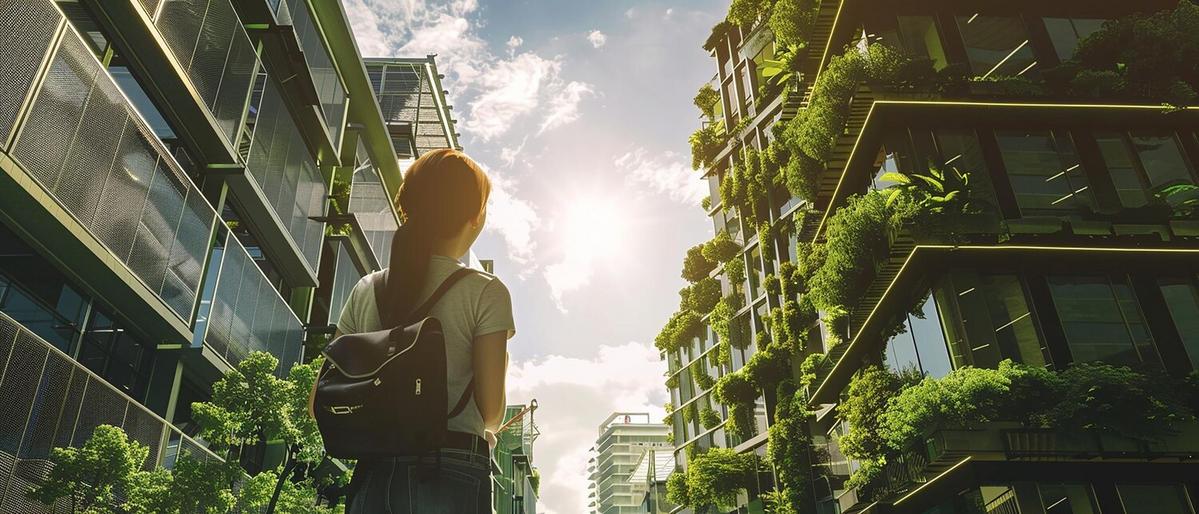
Future Trends in Sustainable Architecture
As we continue to navigate the challenges of climate change, sustainable architecture is increasingly at the forefront of innovative design, promising not only to reduce environmental impact but also to enhance the quality of life for inhabitants.
Embracing the Future of Sustainable Architecture
With the pressing need to address climate change, sustainable architecture is gaining momentum. Experts like architect Michael Green emphasize that “sustainable design is not just about materials but about creating healthier environments.” This sentiment aligns with the growing trend of incorporating nature-inspired designs, such as biophilic architecture, which integrates natural elements into built environments.
Key Trends in Sustainable Architecture
- Biophilic Design: This approach incorporates natural elements like green walls and natural lighting to enhance the well-being of occupants.
- Renewable Energy Integration: Solar panels and wind turbines are becoming standard in eco-friendly buildings.
- Adaptive Reuse: Converting old structures into new, sustainable spaces reduces waste and preserves historical architecture.
Statistics and Research
According to the International Energy Agency, buildings account for nearly 40% of global energy consumption. This highlights the critical role of sustainable architecture in reducing energy use. Moreover, studies have shown that green buildings can reduce energy usage by up to 30%, demonstrating the tangible benefits of sustainable design.
Real-World Examples and Innovations
Consider the Bullitt Center in Seattle, a model of sustainability with its net-zero energy design, rainwater collection systems, and composting toilets. Such examples showcase the potential of sustainable architecture to transform urban landscapes.
Actionable Tips for Sustainable Design
- Incorporate Passive Design: Utilize natural ventilation and sunlight to reduce energy consumption.
- Choose Sustainable Materials: Opt for recycled or locally sourced materials to minimize environmental impact.
Consider using cross-laminated timber (CLT) for construction. It is a sustainable alternative to concrete and steel, offering strength and reduced carbon emissions.
Challenges and Solutions
While sustainable architecture offers numerous benefits, challenges such as higher upfront costs and regulatory hurdles persist. Solutions include government incentives and subsidies that make green building more accessible.
Table: Comparison of Traditional vs. Sustainable Architecture
| Aspect | Traditional Architecture | Sustainable Architecture |
|---|---|---|
| Energy Efficiency | Low | High |
| Material Use | Often Non-renewable | Renewable and Recycled |
| Environmental Impact | High | Low |
| Cost | Lower Initial | Higher Initial, Lower Long-term |
| Occupant Health | Standard | Enhanced |
| Innovation | Traditional Techniques | Advanced Technologies |
| Adaptability | Limited | High |
| Regulatory Support | Standard | Increasing |
FAQs
What is the future of sustainable architecture?
The future of sustainable architecture is promising, with advancements in technology and materials leading to more efficient and eco-friendly designs.
How can I make my home more sustainable?
Incorporate renewable energy sources, use sustainable materials, and integrate passive design techniques to enhance sustainability.
Conclusion
In conclusion, the future of sustainable architecture holds immense potential to revolutionize how we build and live. By embracing innovative designs and materials, we can create structures that not only reduce environmental impact but also enhance the quality of life. As more individuals and organizations adopt these practices, we move closer to a sustainable future.


